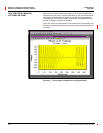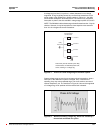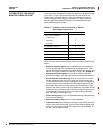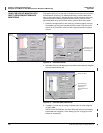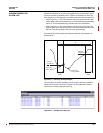
63230-300-212 Chapter 9—Disturbance Monitoring
April 2001 About Disturbance Monitoring
115
© 2001 Schneider Electric All Rights Reserved
A voltage sag is a brief (1/4 cycle to 1 minute) decrease in rms voltage
magnitude. A sag is typically caused by a remote fault somewhere on the
power system, often initiated by a lightning strike. In Figure 9–1, the utility
circuit breaker cleared the fault near plant D. The fault not only caused an
interruption to plant D, but also resulted in voltage sags to plants A, B, and C.
NOTE: The CM4000 is able to detect sag and swell events less than 1/4 cycle
duration. However, it may be impractical to have setpoints more sensitive
than 10% for voltage and current fluctuations.
Figure 9–1: A fault can cause voltage sag on the whole system.
System voltage sags are much more numerous than interruptions, since a
wider part of the distribution system is affected. And, if reclosers are
operating, they may cause repeated sags. The circuit monitor can record
recloser sequences, too. The waveform in Figure 9–2 shows the magnitude
of a voltage sag, which persists until the remote fault is cleared.
Figure 9–2: Waveform showing voltage sag, which was caused by a
remote fault and lasted five cycles.
X
Utility
Circuit Breakers
with Reclosers
Utility
Transformer
1 Plant A
2 Plant B
3 Plant C
4 Plant D
Fault
A fault near plant D, cleared by the utility
circuit breaker, can still affect plants A, B,
and C, resulting in a voltage sag.








